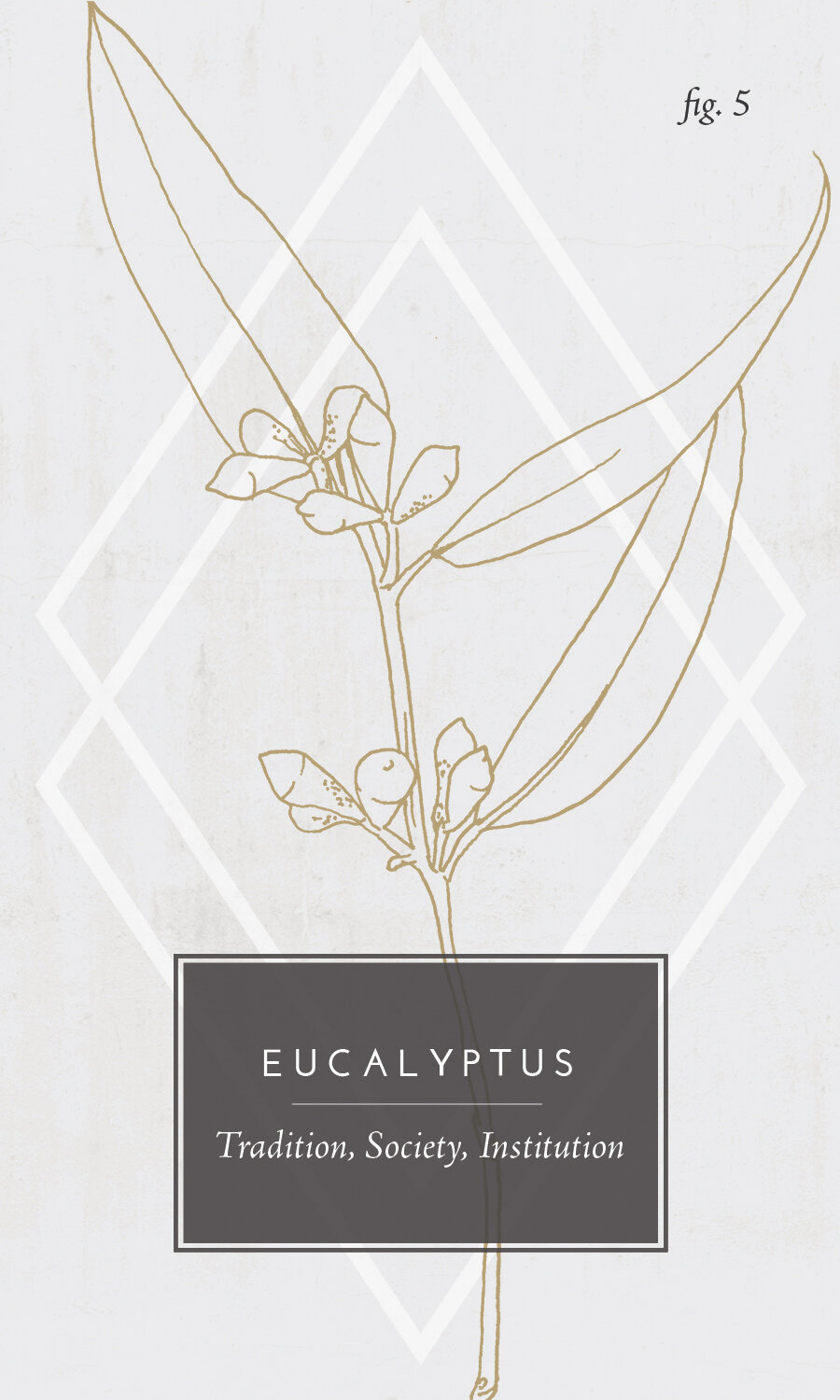05: Eucalyptus / The Hierophant
The Hierophant Tarot Card Meanings
It’s Tarot Tuesday! Every Tuesday I will be posting an article diving deeper into an individual tarot card, to help me better understand its meaning, and to help educate others in the process. I’ll also share about the connection between each tarot card and the botanical I paired it with in my Fleurot tarot deck, which is based around the Victorian Language of Flowers.
Today we are diving into the card numbered 5 in the traditional Rider-Waite tarot, The Hierophant (which is Eucalyptus in the Fleurot deck).
Love this imagery? Purchase the Fleurot Deck here!
Keywords
The Hierophant | Tradition, Society, Institution
Eucalyptus | Protection
In the traditional Rider-Waite Colman-Smith tarot deck, the Hierophant card is represented by a figure cloaked in red, seated on a throne and adorned with a three-tiered gold crown, representing the three realms over which they rule (the conscious, sub-conscious, and super-conscious). They are priest-like in nature, with the symbol of the cross down the front of the robe, and holding a papal cross in their left hand (a triple scepter that symbolizes their religious status). Two pillars flank them, and in front are two followers kneeling before the Hierophant with monk-like haircuts. These figures represent a shared group identity, and the indication that the job of the Hierophant is to pass down spiritual wisdom to others.
The Hierophant is the masculine counterpart to the High Priestess, sometimes also known as the Pope or the Teacher, and is ruled by Taurus. This card represents a traditional, established set of spiritual values and beliefs that are passed down through generations (often correlated with the institution of religion). The Hierophant encourages learning these traditional belief systems from a trusted source before you continue on the path of establishing your own independent thought and making your own choices.
This card could suggest seeking out a mentor figure, or becoming one yourself, depending on where you are at in your journey or what you are being called to do at this point in your life. It may also call you to honor traditions that have been passed down to you and perhaps been neglected or forgotten.
“You are not yet willing to go out on a limb or offer any new and innovative ideas. Instead, you adhere to the key principles and rules that you know will lead to a successful result.”
For more in-depth information about the meaning of The Hierophant tarot card, I highly recommend checking out the description by Biddy Tarot!
Eucalyptus Eucalyptus Globulus
During the Victorian Era, people would exchange flowers and plants as a way of sending messages to express their true feelings (ones they couldn’t often express out loud). The system they developed was published in Flower Dictionaries which allowed the meanings of each flower to be widely accepted, and this language was often dubbed ‘Floriography’.
Eucalyptus is a family of flowering evergreen trees native to Australia, and is happiest in the southern hemisphere. The foliage often has a grey-green tinge to it, and there are many different leaf shapes (some pointy, some rounded, some long stalks and some more branch-like) - over 700 species exist! But all Eucalyptus share a similar intoxicating scent, and a sticky residue or resin resides on the leaves.
The name Eucalyptus comes from the Greek words ‘eu’ (meaning well) and ‘kalyptos’ (meaning covered). The Aboriginals in Australia gave it the nickname ‘Fever Tree’, and they would use the bark and resin to treat fever and respiratory issues. You may have experience with this respiratory cure-all if you’ve ever used the scent of Eucalyptus in a steam bath. It is a great sinus clearer! Thus, it is not only physically protective, but medicinally protective as well. Perhaps this is how it earned the meaning of ‘protection.’
If you’ve ever stood within a grove of Eucalyptus trees you might know why this sturdy tree symbolizes protection. The tall trunks seem almost impenetrable… not unlike our societal traditions and institutions, represented by the Hierophant of traditional Tarot (and the reason I paired this card with this botanical in the Fleurot deck). But perhaps these systems are less impenetrable than they seem? After all, to exit a grove of trees you simply have to walk between the trunks.


